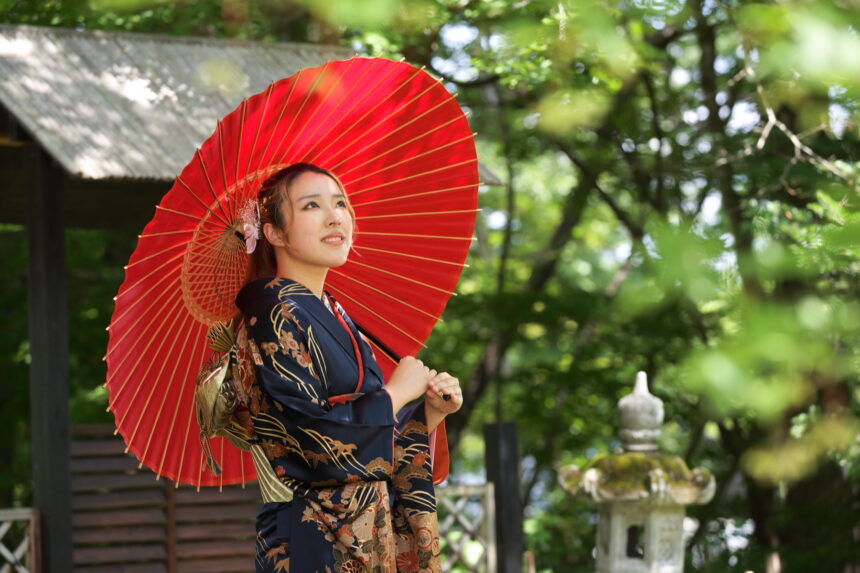Kimono is the national dress of Japan. Everyone knows this, but not everyone knows how to wear one, or how to “pull it off.” While “kimono” is often used as a synonym for “dressing gown,” and can therefore be sometimes thought of as a casual outfit, in truth it is quite the opposite. Imagine thinking your pajamas were the equivalent of a suit!
Well, let’s go through kimono, what they consist of, how to dress in them, and how they are significant in Japanese culture today.
Kimono Parts
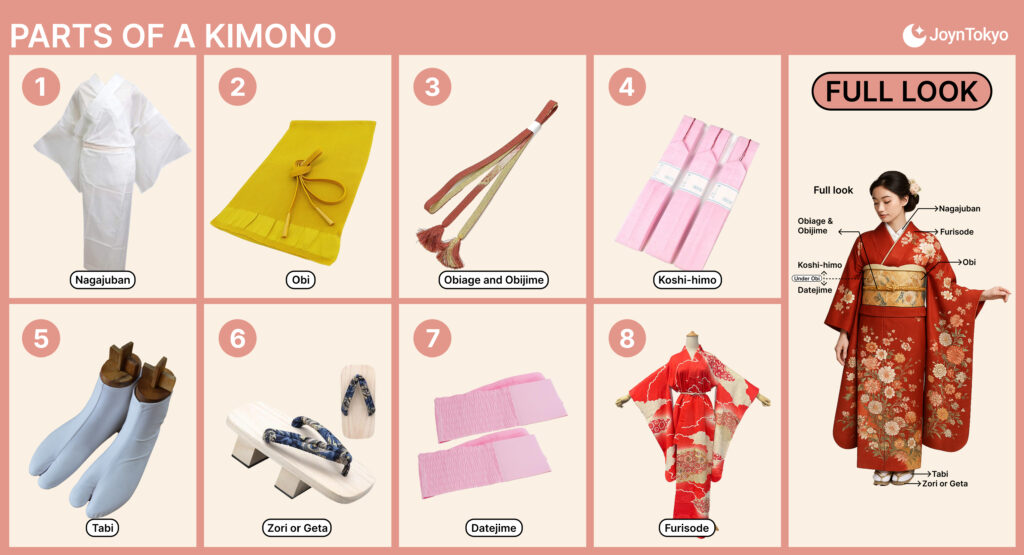
There are many different parts to a kimono. While to many it might seem as though it’s as simple as wearing a couple of layers and tying it with a sash, there are many different types of kimono, and many different ways to wear them. So let’s go through some basics!
Key Parts of a Kimono
Kimono – The outer garment. Can be casual (like cotton yukata) or formal (like silk furisode).
Nagajuban – A thin under-kimono worn beneath the main kimono to protect it from sweat and dirt.
Obi – The wide sash or belt that ties around the waist. This is often the most decorative and difficult part.
Obiage and Obijime – Accessories used to hold the obi in place and add extra flair.
Koshi-himo – Thin belts used to help position and secure the layers of fabric.
Tabi – Traditional white socks split between the toes.
Zori or Geta – Traditional sandals worn with tabi.
Datejime – A flat belt used to keep everything neat under the obi.
How To Wear a Kimono
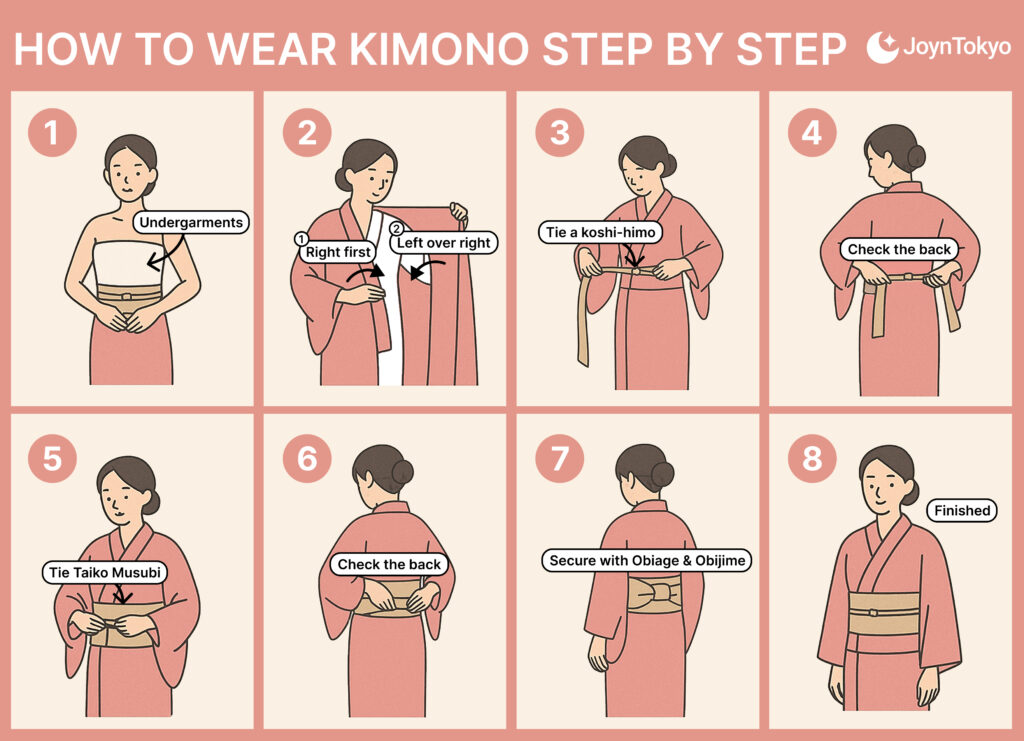
The first thing to remember is: keep your underwear on! While there is traditional Japanese underwear (hadajuban), for the most part, you’re fine wearing what you’ve got.
That said, t-shirts and similar are a no-go. Kimono often expose a little bit of upper chest, and that is normal (except for younger ladies, where covering the chest is important, as we will discuss below).
So what are the main steps? Let’s go.
Step 1: Kimono Undergarments
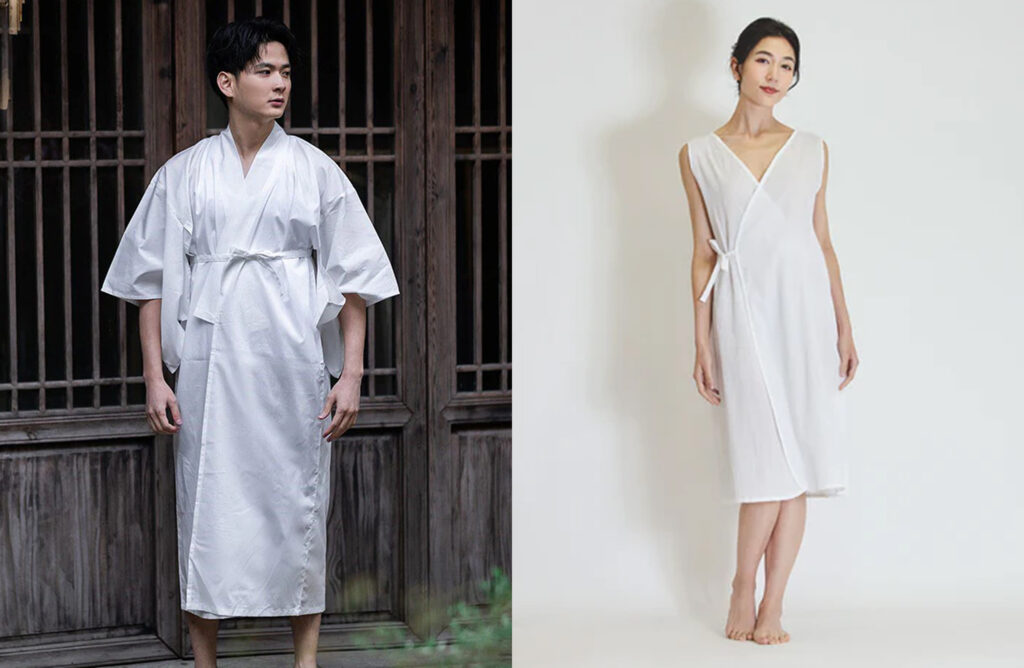
Men: This is simple. Just wear a low-cut vest or go shirtless. Keep your underwear on (you animal) but keep it light and easy.
Women: Put on your hadajuban or a camisole, followed by the nagajuban. The nagajuban protects the outer kimono from sweat and helps structure your figure.
Step 2: The First Layer of a Kimono
Men: Now, wear the actual kimono. Wrap the left side over the right (always left over right—more on that below). Tie a koshi-himo (waist cord) around your hips to hold it in place.
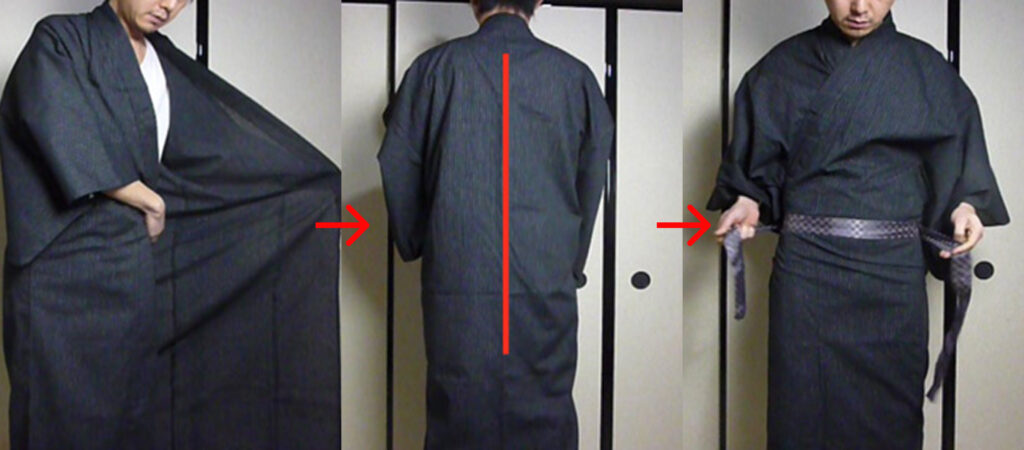
Women: Put on your kimono, also left over right. Smooth the front, tie with a koshi-himo. Check that the length is appropriate, usually adjusted by folding excess fabric at the waist.
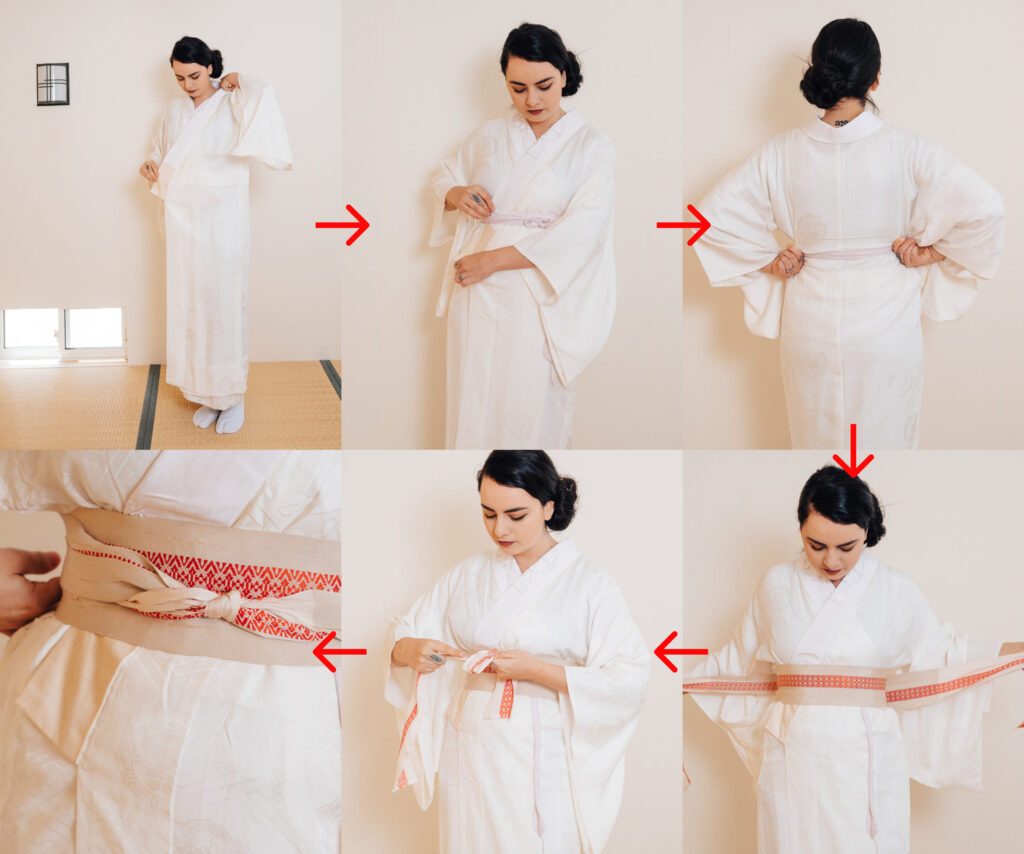
Step 3: Obi
Men: Your obi is narrow and simple. Wrap it around your waist, tie it in the back, and tuck the ends.
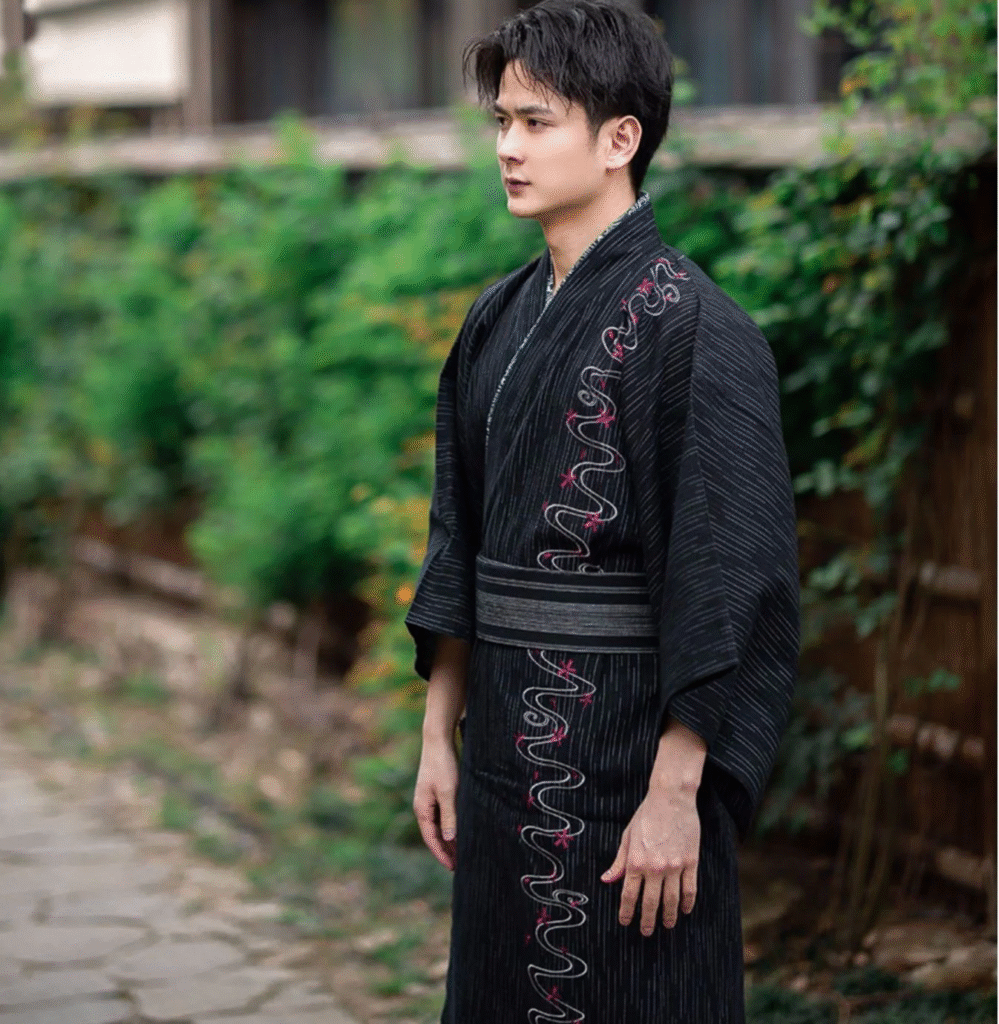
Women: This is the trickiest part. There are many styles of obi, and tying them can be difficult. The most common is the taiko musubi (drum knot), especially for semi-formal events. Use padding if needed to shape the torso flat, then tie the obi tightly and secure it with an obiage and obijime.
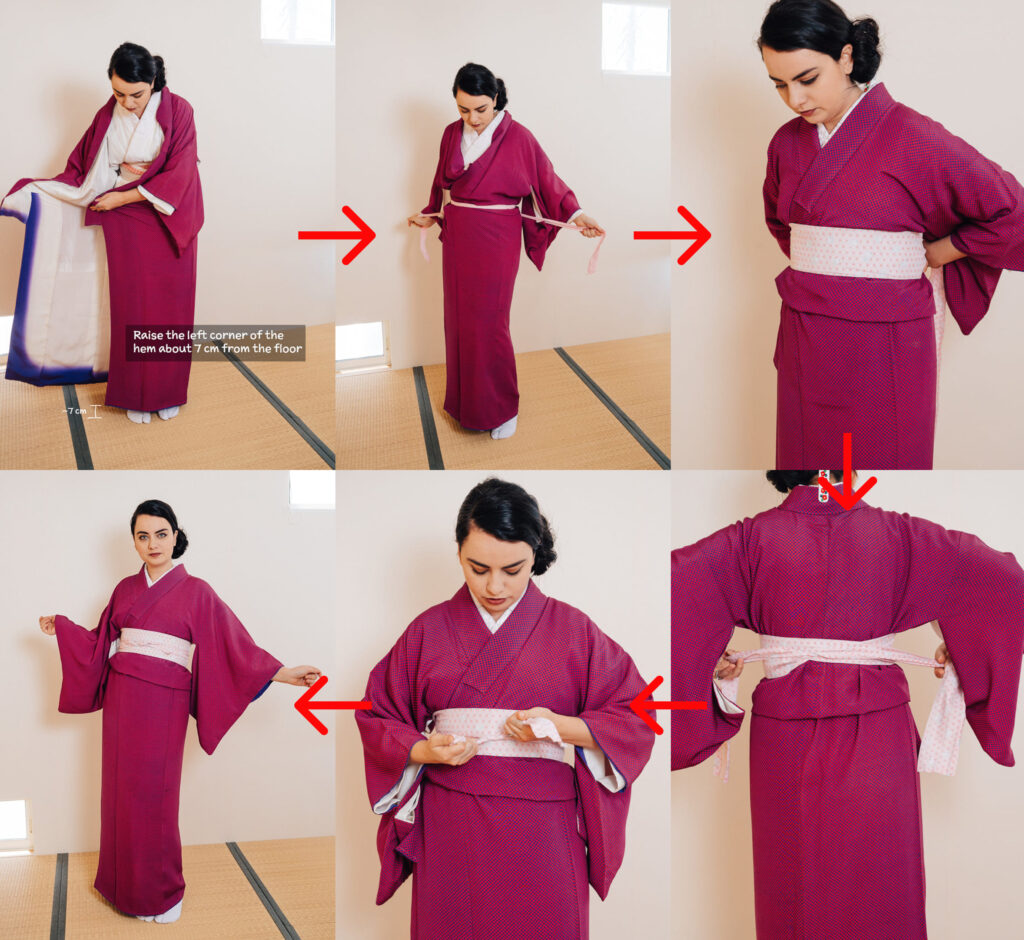
Rules When Wearing a Kimono
Wearing a kimono is about more than just fashion: it follows specific cultural etiquette. Here are some important rules you need to follow:
Rule 1: Left Over Right
Always wrap the left side over the right. The only time right over left is used is when dressing a body for a funeral. This is one of the most important rules to follow, and getting it wrong is a huge faux pas.
Rule 2: Posture Matters
Kimono are designed for upright, elegant posture. Stand tall, walk with small steps, and avoid slouching. When sitting, smooth the kimono under your knees and tuck your legs to the side if sitting on the floor.
Rule 3: Hide the Neck (or Don’t)
Young women often show the nape of their neck slightly: this is considered elegant and attractive. But for unmarried women wearing furisode, it’s important to keep the chest area modest. For older women, the collar is usually worn higher and tighter, though there are fewer compunctions about the chest (within reason).
Rule 4: Keep It Neat
No wrinkles! A sloppy kimono is disrespectful. Use koshi-himo, datejime, and padding to ensure everything lies flat and clean. The hem should fall just above the feet.
Rule 5: Matching Season and Occasion
Kimono come in seasonal colors and fabrics. Light cotton yukata are for summer festivals, while rich silk tomesode or houmongi are for formal events. Don’t show up to a wedding in a casual yukata!
Final Note on Wearing a Kimono
Wearing a kimono may seem daunting, but it’s a beautiful way to engage with Japanese culture. If it’s your first time, consider getting dressed at a rental shop or by a professional. Once you’ve learned the basics, you’ll appreciate the elegance and detail that makes kimono so iconic.

